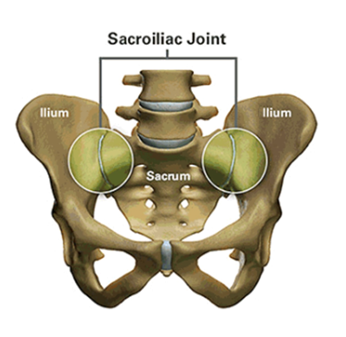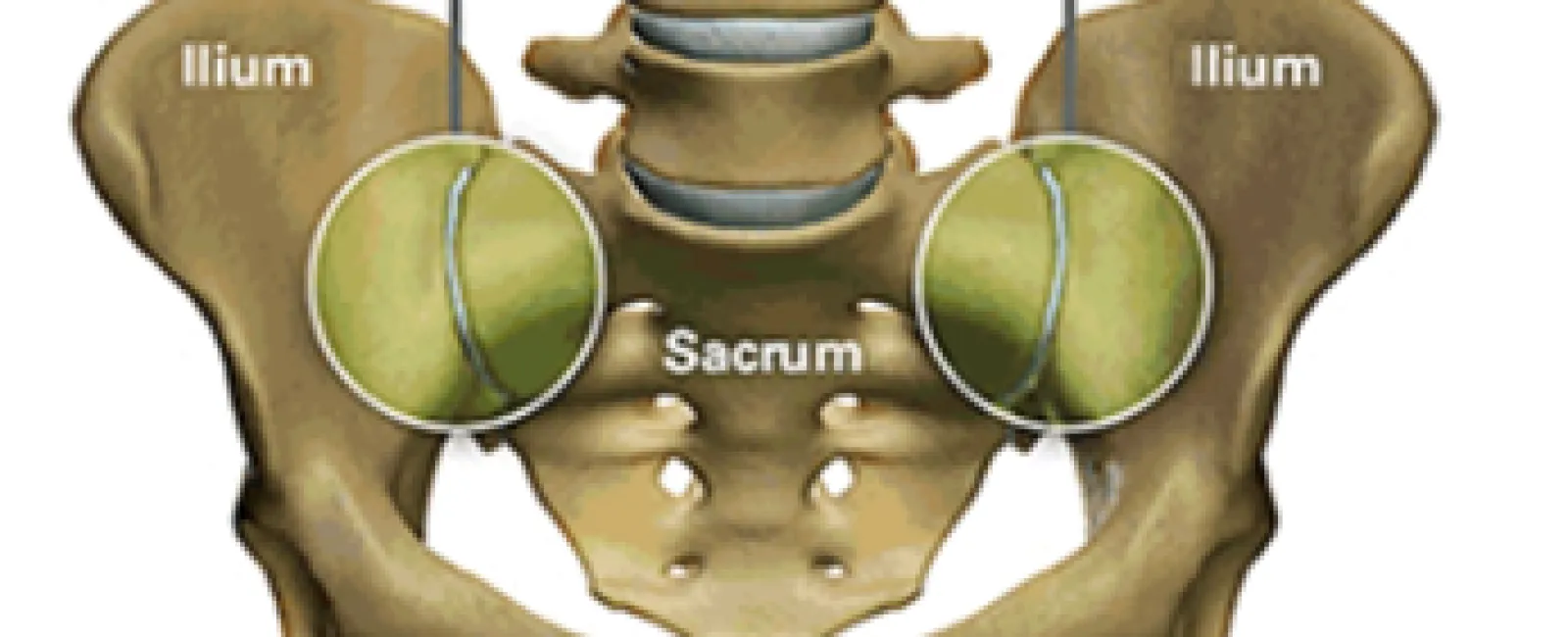Sacroiliac Joint (SI Joint) Anatomy
The sacroiliac joint (SI joint) is located in the
pelvis; it links the iliac bones (pelvis) to the sacrum (lowest part of the
spine above the tailbone). It is an essential component for energy transfer
between the legs and the torso.

Like any other
joint in the body, the SI joint can be injured and/or undergo degeneration.
When this happens, people can feel pain in their buttock and sometimes in the
lower back, hips and legs. This is especially true while lifting, running,
walking or even lying on the involved side.
It's common for pain from the SI joint to feel like disc or lower back pain, or sometimes hip or groin pain.
Symptoms of SI Joint Dysfunction
- Lower back pain
- Sensation of low extremity: pain, numbness,
tingling, weakness
- Pelvis/buttock pain
- Hip/groin pain
- Feeling of leg instability (buckling, giving way)
- Disturbed sleep patterns due to pain
- Disturbed sitting patterns (unable to sit for long periods, sitting on one side)
- Pain going from sitting to standing

Diagnosing SI Joint Problems
A variety of tests performed during physical examination
may help reveal the SI joint as the cause of your symptoms. Sometimes, X-rays,
CT-scan or MRI may be helpful in the diagnosis of SI joint-related problems
because they can rule out other common sources of pain—such as your lumbar
spine or hip joints. It is also important to remember that other conditions (like
a disc problem) can co-exist with SI joint disorders.
The most relied upon method to accurately determine whether the SI joint is the cause of your lower back pain symptoms is to inject the SI joint with a local anesthetic. This diagnostic injection will be performed under either X-ray or CT guidance to verify accurate placement of the needle in the SI joint. If your symptoms decrease by at least 50%, it can be concluded that the SI joint is either the source of or a major contributor to your lower back, hip, or pelvic pain. If the level of pain does not change after SI joint injection, it is less likely that the SI joint is the cause of your pain.
Treatment Options
Once the SI
joint is confirmed as the cause of your symptoms, treatment can begin. Some
patients respond well to physical therapy, use of oral medications, or
injection therapy. If these non-surgical treatment options have been tried and do not provide long-term relief,
your doctor may consider surgical options.
At OrthoSouth, one of the surgical options is SI joint fusion with the iFuse Implant System®. OrthoSouth spine surgeon Dr. John Eager is trained in SI joint fusion with this system and is available for consultation when conservative measures are unsuccessful.
To learn more about the OrthoSouth Spine Institute and providers, please visit the Spine Institute page.

